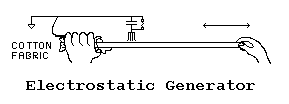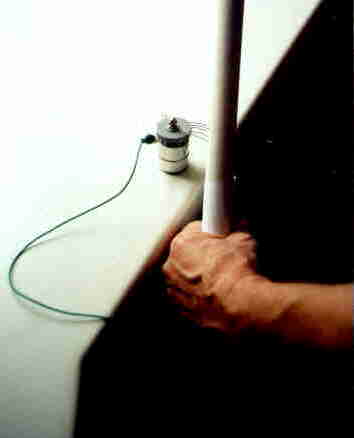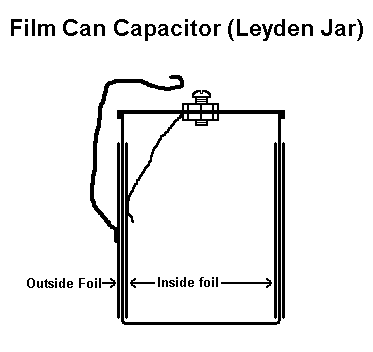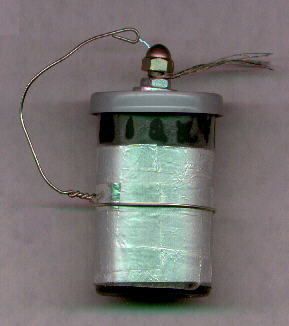
The generator is made by using a piece of 3/4 inch pvc pipe about four feet long and a piece of cotton fabric. Paper seems to work quite well also. To operate, one simply holds the fabric or paper with the left hand wrapped around the pipe. The pipe is then pushed and pulled through the fabric, with large strokes, while holding the pipe near some fine wire tip pickups to collect the charge. The wire tip pickups can be connected to a leyden jar or electrostatic motor etc. It is also a good idea to hold in the left hand, along with the fabric, a piece of metal that is connected to ground. This gives the generator a good voltage reference point and keeps the body from building up a big charge that will zap you the next time you touch a grounded object.

With the spark gap set at about 1/4 inch, a spark can be produced across it with almost every stroke of the pipe. This PVC pipe generator does a very good job of running an electrostatic motor like the one described here. This generator worked well for me even on a very wet rainy day.



The picture of the film can leyden jar is self explanatory. Now days, a film "can" is really plastic but it is a kind of plastic that makes a great capacitor. The inside foil can be taped to the wall or secured any way you want, so long as it makes good contact with the wall. One person wrote back and reported that the film can exploded as a result of using rubber cement to glue the inside foil to the wall. Rubber cement is highly flammable and explosive and was set off by sparking inside.
28 Mar. 1996. Updated 2 Oct. 1999